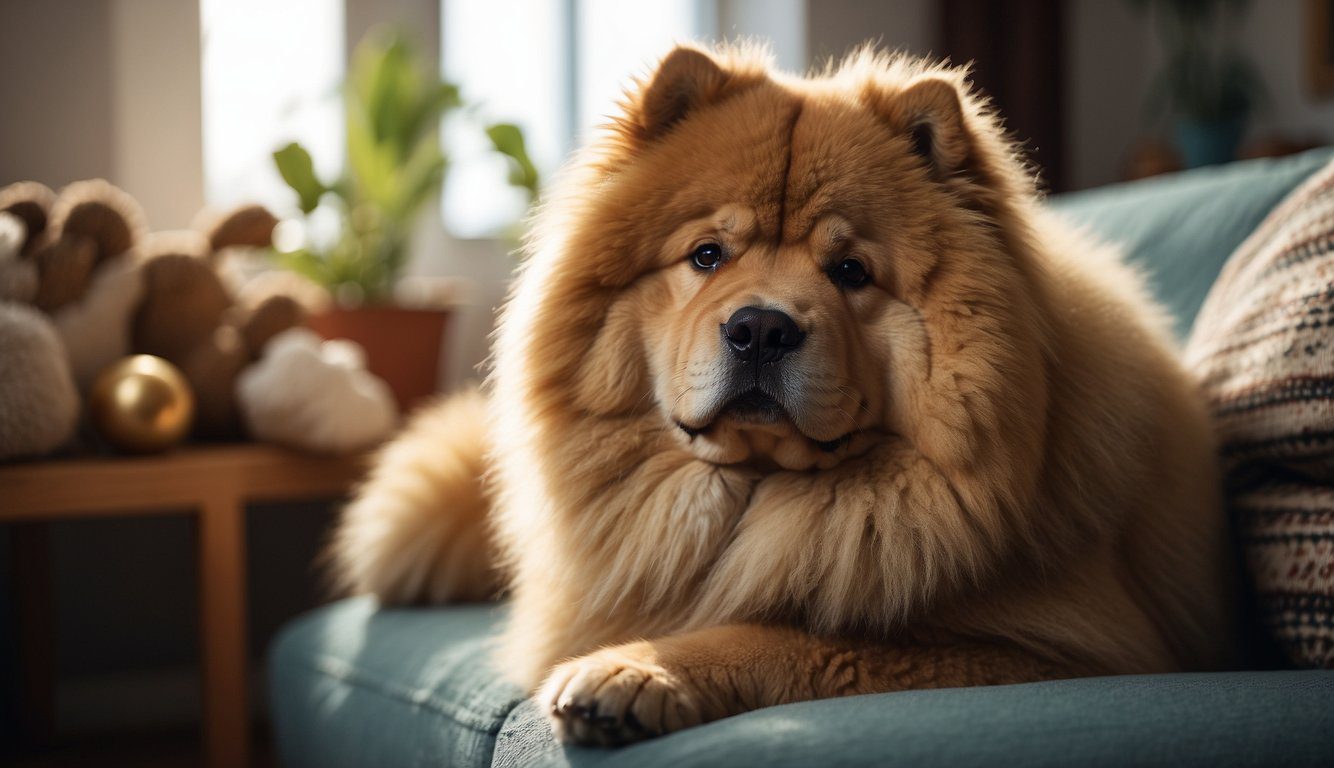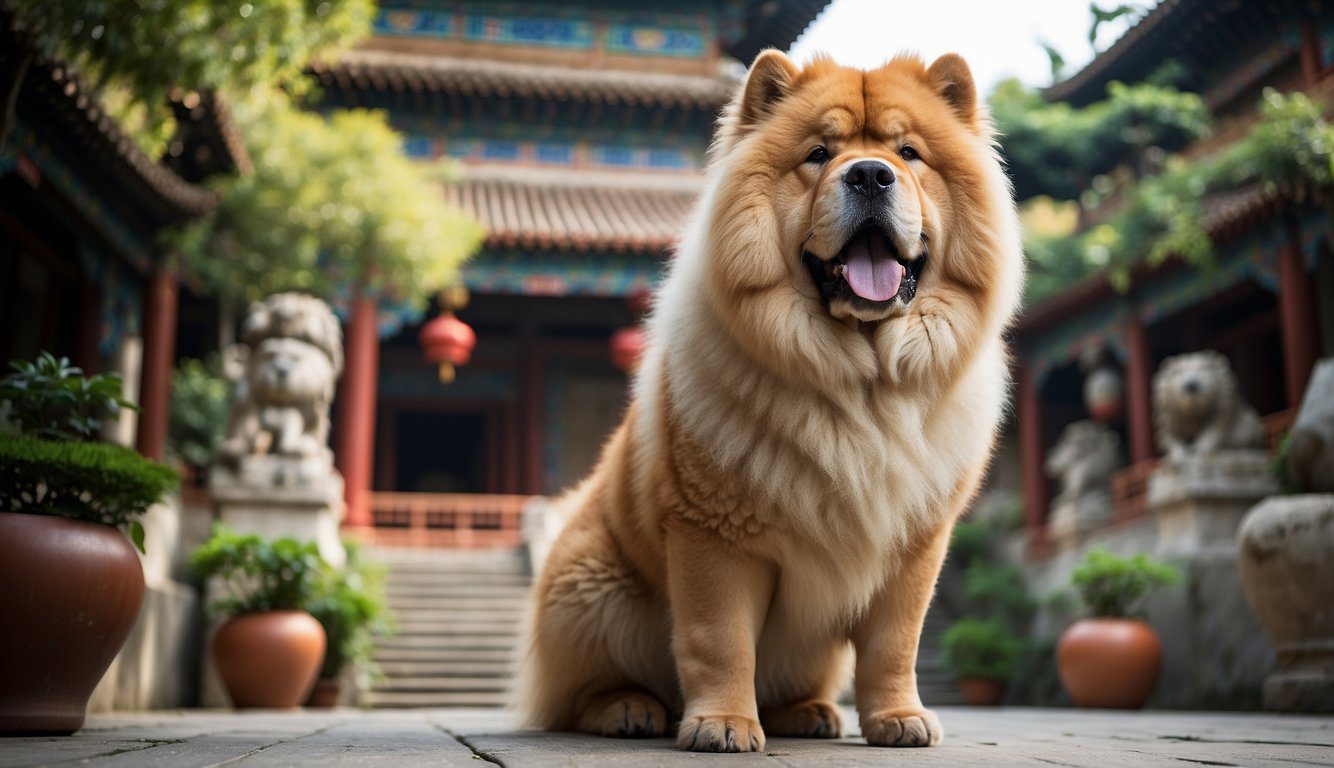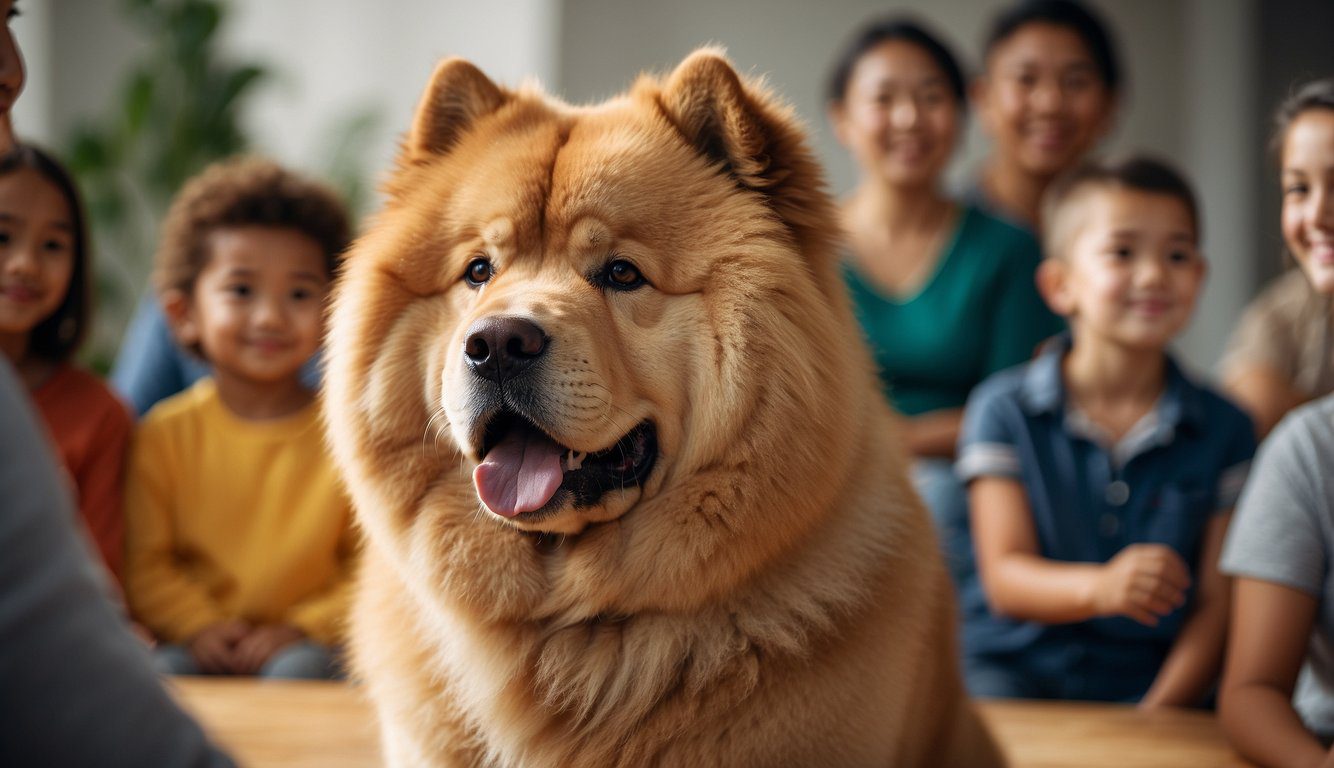What to Know
Adopting a Chow Chow
Thinking of adopting a Chow Chow? This unique and fluffy breed can bring lots of joy and a few challenges to your life.
Before you bring a Chow Chow home, it’s important to know they are fiercely loyal but need a firm owner.

I remember when I first adopted my Chow Chow, Bella. She was a handful at first, but her loyalty and love are unmatched.
These dogs have an interesting history that dates back thousands of years in China. Their distinct appearance and lion-like mane definitely set them apart from other breeds.
Preparing for a Chow Chow means understanding their specific care needs.
Grooming is vital due to their thick fur, and they need regular vet check-ups to stay healthy.
With the right training and socialization, Chow Chows can be wonderful companions.
Key Takeaways
- Adopting a Chow Chow requires a firm and loving approach
- Regular grooming and health check-ups are crucial
- Proper training and socialization make Chow Chows great companions
History and Origin

Learning about Chow Chows reveals their deep-rooted history and evolution. From their ancient beginnings in China to becoming beloved pets today, their journey is fascinating.
Ancestral Roots
Chow Chows are among the oldest dog breeds, with origins dating back over 2,000 years.
They were once revered in Northern China as powerful symbols. The Chow Chow’s distinctive features, like the lion-like mane and blue-black tongue, have made them iconic.
Historical records show that these dogs were favored by Chinese nobility.
During the Han dynasty (206 BCE – 220 CE), they served various roles such as guarding, hunting, and even pulling sleds. Their robust build and protective nature made them invaluable.
Evolution Into a Modern Pet
Over time, Chow Chows transitioned from working dogs to cherished companions.
Their resilient nature and striking appearance captured hearts worldwide. By the 19th century, they gained popularity in England and later in the United States.
Today, Chow Chows are known for their loyalty and reserved demeanor.
While they may appear aloof, they form strong bonds with their families.
Taking on a Chow Chow means respecting their independent spirit and ensuring they get proper socialization and care.
Their unique look and ancient lineage make them a special breed to own.
If you’re considering adopting a Chow Chow, remember their rich history influences their behavior and needs.
Learn more about adopting one here.
Understanding the Chow Chow
Chow Chows are a unique dog breed with distinct personality and physical traits. Let’s explore their key characteristics, behavior, and physical features.
Breed Characteristics
Chow Chows have been around for thousands of years, originally bred in China for hunting and guarding. They are known for their sturdy build and serious demeanor.
They have a robust and compact frame. Chow Chows stand around 17 to 20 inches tall and usually weigh between 45 to 70 pounds.
Their black tongue is one of their most distinguishing features. Some believe it signifies their ancient lineage.
Their coat is another standout feature, which can be either rough or smooth. The fur around their neck, resembling a lion’s mane, adds to their majestic look.
Temperament and Behavior
Chow Chows are independent and can appear aloof, but they are incredibly loyal to their family.
They are not always keen on friendliness with strangers, which makes them excellent for protective roles.
Their demeanor can be described as dignified and reserved.
Despite their serious expression, Chow Chows enjoy playtime but might not be as energetic as other breeds.
They are intelligent but can be quite obstinate. Training requires patience and consistency.
Physical Attributes
Chow Chows have a plush double coat that needs regular grooming to avoid matting.
The dense undercoat and coarser outer coat require brushing a few times a week.
These dogs come in various colors like red, black, blue, cinnamon, and cream.
Exercise needs are moderate—daily walks and playtime suffice.
Their sturdy build suggests strength but not necessarily agility.
Chow Chows can be prone to certain health issues, such as hip dysplasia and entropion, a condition where the eyelid rolls inward.
Preparing for Adoption

Adopting a Chow Chow requires careful planning and consideration. Ensuring the dog fits your lifestyle and preparing your home for the new arrival are crucial steps.
Choosing the Right Chow Chow
When thinking about adopting a Chow Chow, you should first consider your family’s needs and lifestyle.
Chow Chows are known for being very loyal, but they can also be stubborn and independent.
Visiting animal shelters and rescue organizations can give you a better sense of different Chow Chows’ personalities.
Ask volunteers and shelter staff about the temperament and history of each dog. This helps you find a pet that fits your home’s dynamics.
If your family includes young children, make sure the Chow Chow is comfortable around kids.
Some Chow Chows are better suited for homes without other pets, so you’ll need to assess this, too.
Remember, each dog is unique, and finding the right match can make a big difference.
Setting Up Your Home
Before bringing your new pet home, make sure your living space is ready.
Chow Chows are medium-sized dogs that require enough room to move around comfortably.
A secure, fenced yard is essential for their playtime and exercise.
Inside, create a cozy area for your Chow Chow to rest.
You’ll need a comfortable bed, some toys, and possibly a crate for training.
Prepare for the financial responsibilities as well.
Costs can include food, grooming tools, and routine vet visits. Grooming needs can be frequent since Chow Chows have a lot of fur.
Lastly, have a transportation plan for bringing your new pet home.
Make sure your vehicle is suitable for safely transporting a medium-sized dog.
Print out a checklist to make sure you have everything in order before the big day.
Care and Maintenance
Caring for a Chow Chow can be quite rewarding but requires some effort. Ensuring they have a balanced diet and maintaining their thick coat are crucial for keeping them healthy and happy.
Diet and Nutrition
When it comes to diet, the quality of food is essential.
I feed my Chow Chow a mix of high-quality kibble and fresh meats.
Proteins like chicken, beef, and fish are crucial for their diet. Aim for food that lists meat as the first ingredient.
I also include some vegetables like carrots and peas. These are great for fiber and vitamins.
Occasionally, I give treats but keep it moderate to avoid weight issues.
Remember that portion control is important because Chow Chows can gain weight quickly.
Keep fresh water available at all times.
This breed isn’t very energetic, but daily walks are necessary to prevent obesity.
Feeding twice a day is a good routine, splitting their daily recommended intake into two portions.
Always consult your vet for the best dietary plan specific to your dog’s needs.
Grooming Needs
Grooming a Chow Chow is no small task, but it’s manageable with the right tools and routine.
I brush my Chow Chow’s coat at least twice a week to reduce shedding and prevent tangles.
Using a slicker brush and a wide-toothed comb helps a lot.
Their thick double coat requires regular baths, around once a month.
When bathing, make sure to use dog-specific shampoo to avoid skin irritation.
Brushing their teeth and trimming their nails are also part of the routine.
I find that brushing their teeth at least three times a week keeps dental problems at bay.
For nail trims, I do it once a month or as needed.
Pay attention to their ears; clean them weekly to avoid infections.
This grooming routine might seem extensive, but it’s critical for your Chow Chow’s health and well-being.
Health and Wellness
Proper health and wellness are crucial when adopting a Chow Chow. These dogs often face specific health issues, so regular veterinary care and awareness of common health concerns are important.
Common Health Concerns
Chow Chows can have several health problems that owners should know.
One major concern is hip dysplasia, which affects their hips. It can cause pain and arthritis as they age.
Another common issue is elbow dysplasia. Both hip and elbow dysplasia are genetic conditions that breeders should screen for.
Patellar luxation, where the kneecap moves out of place, can also be a problem.
Eye issues are also frequent in Chow Chows. They can develop entropion, where the eyelid rolls inward, causing irritation.
Cataracts and glaucoma are other eye problems that might affect them. Regular check-ups can help catch these issues early.
Chow Chows can also develop thyroid problems.
Hypothyroidism, where the thyroid doesn’t produce enough hormones, can lead to weight gain and lethargy.
Veterinary Care
Regular vet visits are essential for keeping your Chow Chow healthy.
Find a veterinarian experienced with Chow Chows or large breeds.
Your vet will likely screen for common issues like hip and elbow dysplasia, and eye conditions.
Annual check-ups will help manage and treat thyroid issues and other potential health problems.
Vaccinations, dental care, and routine blood tests are important parts of the vet care routine.
Exercise is also vital.
Chow Chows need regular but moderate exercise to maintain a healthy weight and prevent joint issues.
Regular grooming helps avoid skin infections.
Due to their thick fur, Chow Chows are prone to hot spots and other skin issues if not properly cared for.
Training and Socialization
Training and socialization are key to ensuring your Chow Chow becomes a well-behaved and friendly member of your family.
Early training helps with behavior problems, and proper socialization prevents them from becoming aggressive or overly independent.
Basic Training Commands
Teaching your Chow Chow basic commands is essential.
I started with simple commands like sit, stay, and come when my Chow was just a pup.
These foundational commands build communication between you and your dog.
To train a Chow Chow, consistency is key.
Use a firm but gentle voice. Positive reinforcement, like treats and praise, works wonders.
My Chow responded well to treats during training sessions.
Due to their stubborn nature, Chow Chows might need extra patience.
Short, frequent training sessions work best to keep them engaged. Avoid punishing them, as this can lead to fear-based behavior issues.
Social Interaction Tips
Socializing a Chow Chow should start early.
I took my Chow to puppy socialization classes to meet other dogs and people in a controlled setting, which you can read about here.
This exposure made him more comfortable around others and prevented aggressive tendencies.
Introduce your Chow to various environments, like parks and busy streets, to get them used to different sounds and sights. This helps them stay calm and steady in new situations.
Regular play dates with other well-behaved dogs and supervised interactions with cats and other pets ensure your Chow learns to coexist peacefully.
Remember, the goal is to create positive experiences, so always supervise and ensure interactions are friendly.
FAQs

Adopting a Chow Chow can be a wonderful experience but requires careful planning and consideration. Below, I’ve answered some common questions to help you make an informed decision.
What should I consider before bringing a Chow Chow into my home?
Before adopting a Chow Chow, think about time commitment and environment.
They need regular grooming due to their thick coat which sheds frequently. This breed also requires consistent training and socialization to thrive. Make sure your schedule allows for these needs.
Can Chow Chows adapt to living in an apartment?
Yes, Chow Chows can live in apartments provided they get enough exercise.
While they aren’t highly energetic, they still need daily walks. I’ve found that my Chow does well with a fixed routine. Just make sure there’s space for them to rest comfortably.
How much does it typically cost to care for a Chow Chow annually?
Owning a Chow Chow involves significant costs. Annually, expect to spend around $1,500 to $2,000.
This includes food, grooming, medical care, and other essentials. Personally, I budget extra for grooming due to their dense coat, which can cost about $50 per session.
What steps should I take to find a responsible Chow Chow breeder?
Start by researching reputable Chow Chow breeders.
Look for breeders who are transparent about their dogs’ health and provide clear records.
When I was searching, I checked for breeders associated with recognized breed clubs. Visiting the breeder’s facility and meeting the puppies in person can also be insightful.
What are the common health issues to be aware of when adopting a Chow Chow?
Chow Chows are prone to health problems like hip dysplasia, eyelid disorders, and thyroid issues.
Regular vet check-ups are crucial for early detection. My own Chow had an eyelid issue that required surgery, so it always helps to be prepared for unexpected medical expenses.
How can I assess if a Chow Chow’s temperament is a good fit for my family?
Chow Chows can be aloof and independent. Spend time with the dog before adopting it to gauge its temperament.
I found it helpful to observe interactions with different family members and other pets. This breed isn’t always great with young children, so consider your household dynamics.

